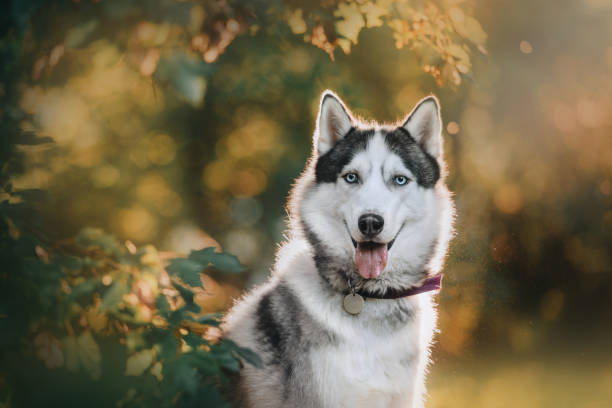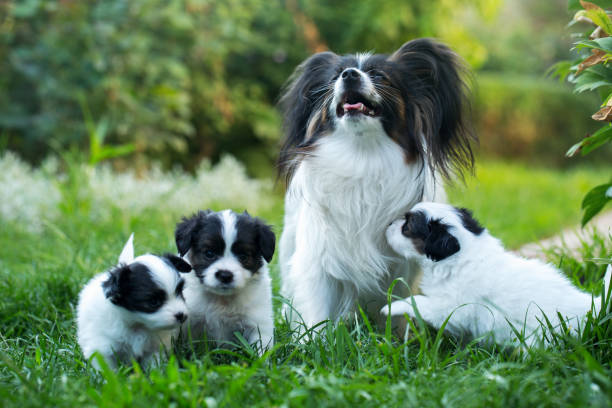Bearded dogs are often misunderstood and misrepresented. They are not just a strange fad, but rather a genuine breed of dog that appears in a variety of shapes and sizes. Regardless of whether it’s the English Bearded Collie with its long hair or the Bouvier des Flandres with a short hair coat, these dogs intermittently receive recognition for their elegant moustaches beneath a coat of hair.
Let’s explore some lesser-known facts about bearded dogs, like why they’re called “bearded,” how they’re groomed, and what breeds they come in!
1. They’re a breed of dog all their own
There are over 20 breeds that have been identified as bearded dogs, but they can be categorized into two distinct groups: Poodles and non-poodle varieties. One group is referred to as Poodle-like or Beardie-like, while the other is known simply as Bearded. Poodle-like dogs have a curly coat, which is usually medium in length with a soft texture.
They also tend to be rather large in size and sturdy in structure. Popular breeds that fit into this category include the aforementioned English Bearded Collie, American Water Spaniel, Manchester Terrier, Lowchen and Portuguese Water Dog.
Non-poodle-like dogs are named for their straight, coarse coats. These breeds usually have a harsh outer coat with a soft inner coat protecting them from cold or wet climates. The most popular non-poodle breed is the aforementioned Bouvier des Flandres who takes his name from his native country in Belgium.
Other Bearded varieties include the Cane Corso, the Polish Lowland Sheepdog (sheepdog), and the Swedish Lapphund (spitz).
2. Grooming them is like taking care of two dogs
With their thick outer coat and soft inner coat, bearded dogs require regular shaving throughout the year to keep their coats manageable. However, many people choose to shear their dogs instead, or they’ll even try and do it themselves with clippers. This is a common misconception that the hair under their chin is just like any other part of their body and can be treated as such.
The truth is that this hair becomes quite matted and tangled when not cared for appropriately! Instead, it would help if you brushed your dog’s beard regularly with a wire slicker brush to keep it under control.
Make sure to take care of their coat: 10 Tips for Keeping Your Dog’s Coat Healthy and Shiny


3. They were initially used for herding sheep
Bearded dogs have been around for at least 2,000 years and are believed to have originated in China. Like most ancient breeds, the origins of their names are unclear, but many people think that they were first bred to herd sheep.
4. The word “beard” refers to the hair under their chin
While some other breeds may be called bearded strictly because of their facial hair, that’s not why these dogs are known as such. Their name is derived from the Old English barð or beard, which means “the hair growing on the lower part of a man’s or animal’s face.”
5. You can find bearded dogs all over the world
While they may have originated in China, the bearded dog has adapted to living in various regions across the globe, notably Europe and North America.


6. The oldest breed is called the Chinese Chongqing
Though it may be hard to imagine a dog with a thin, hairless tail and a rat-like face, the Chinese Chongqing is believed to have existed in its current form 3,000 years ago. However, it wasn’t until 2007 that organizations such as the Fédération Cynologique Internationale (FCI) began to recognize the breed.
7. The most popular bearded dogs come from Belgium
While there are a growing number of people who own bearded dogs as pets, the breeds that tend to be recognized as especially distinguished and impressive include those from Belgium. The American Kennel Club has identified five different types of Belgian sheepdogs, which consist of the Pyrenean Shepherd, Tervuren, Laekenois, Groenendael, and the Malinois (which is also known as the Belgian Shepherd). These dogs are often used to herd sheep in rural parts of Europe.
8. The American Water Spaniel
Contrary to popular belief, this breed is not a spaniel but was recognized by the United Kennel Club in 1940. This bearded dog is a gun dog bred for hunting waterfowl and has been around since the mid-1800s. Considering its predilection for swimming and close association with waterways, it’s not too difficult to see how this breed got its name.
First time to own a dog? Find out if it’s the best breed for you: The Best Dog Breeds for First Time Owners


9. The oldest bearded dogs have been around for over 2000 years
While the name may have been derived from a type of hair found on some humans, it’s hard to believe that these dogs have been around since the time of the Roman Empire! There is evidence of bearded dogs in Chinese paintings dating back as far as 2,000 years ago. Their popularity spread through Asia, and they eventually found their way to Europe in the 400s.
10. Bearded dogs come in three different types: spitz, pastoral and northern
People often assume that all bearded dogs are of the same kind when there are three distinct types: rural (or mountain), north and spitz. While they share similar characteristics, they also have their differences which are often easiest to spot when looking at the shape of their face. For example, spitz dogs tend to have shorter snouts, while pastoral or northern breeds usually come with longer muzzles that look a bit more wolf-like in appearance.
11. They’re a relatively healthy breed
While a few common health problems to look out for with this breed, bearded dogs tend to have a relatively healthy gene pool. In fact, in a 2004 UK Kennel Club survey that looked at 38 different breeds, only 10% of bearded dogs were found to suffer from serious inherited diseases.


12. Chinese Crested is a hairless dog
As you might have guessed, the Chinese crested comes in two varieties: hairless and powderpuff. While they’re not consistently recognized as bearded dogs by everyone, it’s easy to see how this breed has ties to this particular canine family. Hairless dogs lack an undercoat, and while some people assume they can’t be kept as pets due to their lack of fur, they’re pretty clean and are known for being very gentle.
13. They don’t always have their signature “beard”
Like other dogs identified by certain physical traits, there are cases where bearded dogs may not necessarily look the way you would expect them to. The most common variations include those with a longer muzzle, having only patches of hair around the face, or having very fine whiskers, which may be hard to notice.
14. Bearded dogs are often used in service
Due to their intelligence and temperament, these pups are usually put into service to help people who suffer from physical disabilities or mental illnesses. Their sensitive nature makes them a good choice for those who have been diagnosed with post-traumatic stress disorder. Some people believe that bearded dogs can even help patients with autism.
15. You can give them a hand with grooming
While it’s essential to know the difference between fair hair and fur, some dogs are often confused about being completely hairless! This is especially true of dogs like the Chinese Crested, which have areas where they don’t produce any pigment that makes their skin appear pink. The best way to tell the difference is by looking at their paws. If there’s any hair on them, then it’s fur. Otherwise, it’s just skin.
Learn how you can efficiently bathe your pooch: The Ultimate Guide to Bathing a Dog


Conclusion
Bearded dogs are a relatively healthy breed with few health issues. These canines make excellent pets, especially for those who suffer from physical disabilities or mental illnesses. They’re intelligent and sensitive pups who tend to be more than happy to help people in need of assistance around the house! Whether you’re looking for an excellent pet that’s easy on grooming or someone who will provide companionship unconditionally, these furry friends may be what you’ve been searching for.


